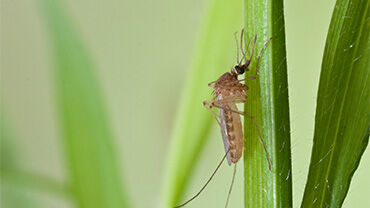Epidemiological update: West Nile virus transmission season in Europe, 2023
During the 2023 West Nile virus transmission season, and as of 4 January 2024, 709 locally acquired human cases of West Nile virus infection, including 67 deaths, were reported by nine European Union countries. The reported case count is lower than that of 2022, but the number of affected regions is the highest since the peak in 2018, indicating a wide geographical circulation of the virus.
Human infections
During the 2023 West Nile virus (WNV) transmission season, information on human WNV infection was collected through The European Surveillance System (TESSy) from European Union)/European Economic Area (EU/EEA) countries and EU enlargement countries. As of 4 January 2024, 728 human cases of WNV infection were reported, of which 709 were locally acquired and 19 were travel-associated. Locally acquired cases were reported from nine EU Member States: Italy (336 cases), Greece (162), Romania (103), France (43), Hungary (29), Spain (19), Germany (6), Croatia (6) and Cyprus (5). Deaths were reported by Italy (29), Greece (23), Romania (12) and Spain (3). This season marked the highest number of locally acquired cases reported, following the peak years of 2018 (n= 1 549) and 2022 (n= 1 116).
The earliest disease onset date recorded among the locally acquired cases was on 30 May 2023 (in Italy) and the latest disease onset date was on 5 November 2023 (also in Italy). Most cases (96%) had onset of disease between July and September.
In 2023, the 709 locally acquired human cases of WNV infection were infected in 126 different NUTS 3 regions, among which 22 regions were reported as place of infection for the first time: Gironde, Charente-Maritime, Alpes-Maritimes, Charente, and Haute-Corse in France; Sömmerda in Germany; Kastoria and Ioannina in Greece; Imperia, Taranto, Lecce, Cosenza, Bari, Salerno, and Verbano-Cusio-Ossola in Italy; Gorj and Timiş in Romania; and Cáceres, Huelva, Valencia/València, Barcelona, and Toledo in Spain. All other cases reported through TESSy were infected in regions from where human cases were reported in previous years. Despite a 36% decrease in the number of cases reported during 2023 compared to 2022, the number of regions affected increased by 31%. This indicates a wide geographical circulation of the virus.
In 2023, 19 travel-associated cases of WNV infection were reported by EU member states. Ten of these cases were associated with travel within the EU: Italy (5 cases), Bulgaria (1), Germany (1), France (1), Hungary (1), and Slovenia (1). The remaining nine cases were associated with travel to Australia (1 case), Cameroon (1), Kenya (1), Morocco (2), Montenegro (1), Serbia (1), Ukraine (1), and the United States (1).
Two EU enlargement countries reported 93 locally acquired human cases of WNV infection: Serbia (91 cases) and North Macedonia (2). In addition, both countries reported one travel-associated case each, with the places of infection in Germany and in Montenegro.
Animal outbreaks
Animal data are collected through the Animal Disease Information System (ADIS) of the European Commission. The distribution reports for WNV outbreaks among equids and birds cover the EU/EEA countries exclusively.
In 2023, seven EU countries reported 153 outbreaks among equids and eight EU countries reported 251 outbreaks among birds. Outbreaks among equids have been reported by France (44), Spain (38), Hungary (26), Italy (25), Germany (14), Portugal (5), and Austria (1). Outbreaks among birds have been reported by Italy (200), Germany (19), Spain (19), Bulgaria (6), Hungary (3), France (2), Austria (1), and Greece (1). With the exception of Portugal, Austria, and Bulgaria, all countries that reported outbreaks among equines or birds also reported locally acquired human WNV infections in 2023. In comparison to 2022, in 2023 there were 51% more outbreaks reported among equines and 22% fewer outbreaks among birds.
Disclaimer:
The information provided in this report is current as of 4 January 2024, sourced from TESSy. The reported cases are subject to change, as additional cases may be reported later, leading to potential variations in number of human cases and/or animal outbreaks.







